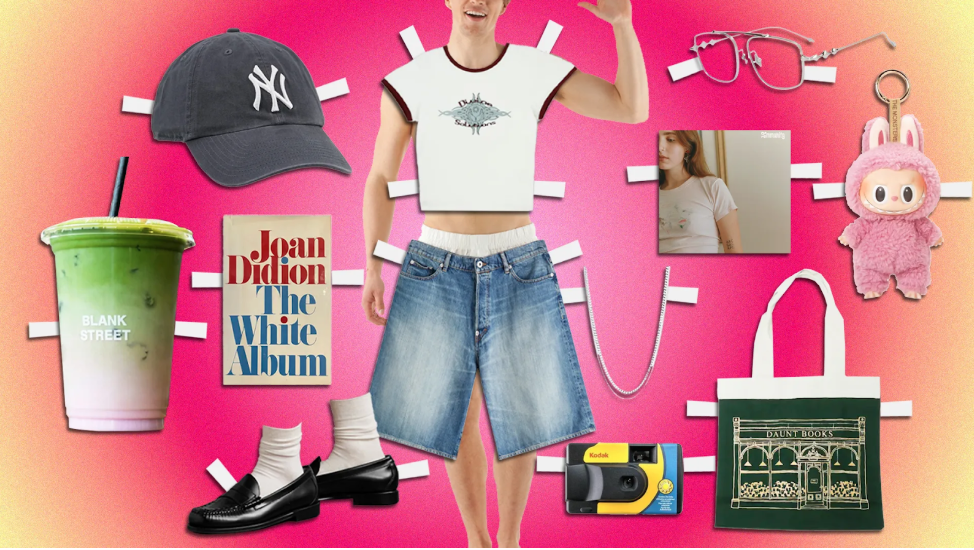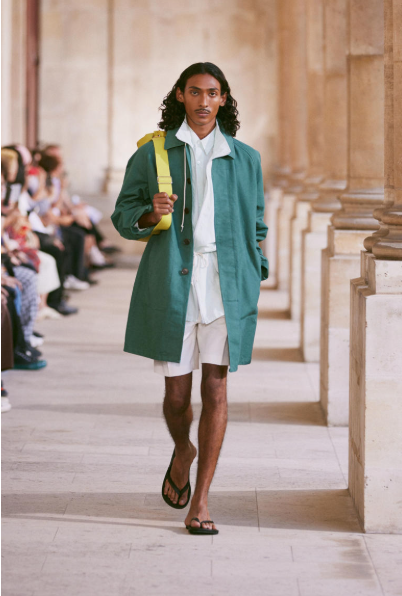Matcha, Labubus, Jeff Buckley CDs, and feminist literature. If you’ve scrolled anywhere on Tiktok, you probably know what I’m talking about: the rise of the “performative male.” Dressed in Birkenstocks, baggy jeans, and wired earbuds connected to absolutely nothing, these men are nothing but exactly that: performative. So let’s peek through the curtains and examine the truth behind this cultural phenomenon.
What is a Performative Male?
The performative male is a modern cultural phenomenon. By definition, it’s a man who adopts feminist or progressive signifiers—books, tote bags, matcha, poetry, indie music—not necessarily out of genuine conviction but as a way to signal virtue, emotional intelligence, or an urge to be “niche.” As Brett F. Braley-Palko notes in Forbes, “When a hobby or aesthetic choice is framed less as genuine enthusiasm and more as a curated signal . . . sincerity easily gets lost in translation.”
But this isn’t inherently new. Judith Butler describes gender itself as having been performative for decades, with men having long curated images of themselves for public approval. From the jet-setting flamboyance of 1980s Donald Trump to the alpha-male egomaniacs of fitness culture, the performative male is simply a contemporary iteration of this age-old performance for attention, filtered through social media and progressive cultural norms.
How Did We Get Here?
The rise of performative males can be attributed to three converging forces. First, expanded conversations about gender and sexuality in mainstream media have encouraged men to explore perspectives beyond traditional masculinity. Despite these steps in the right direction, when male feminism is widely regarded as a joke, it can be an incredible setback. Second, the influence of the “female gaze” on TikTok has created social expectations around sensitivity, intellect, and emotional awareness. Third, a reaction to hyper-masculinity–think Ashton Hall 3 a.m. morning routine influencers to the broader “manosphere,” which promotes rigid, dominant ideals of manhood—has, surprisingly, encouraged a gentler, more nuanced image of what it truly means to be a man. The polarization of this ideal created two extremes, both still rooted in the idea of masculinity more than feminism. To put it simply, it’s the Andrew Tates of the world vs. the Conrad Fishers. As a result, young men today are caught between contradictory cultural imperatives; they are urged to be vulnerable, progressive, and aware, but not in a performative or insincere manner.
So What?
Well, here’s the paradox: the very men who adopt these ideals of reading feminist literature, advocating for equality, even just supporting small businesses, risk being lumped into a category meant to ridicule and distrust. By pitting stylistic maneuvers against moral failings, our society risks alienating genuine male allies. Social media amplifies the performance, rewarding visible displays of virtue while simultaneously punishing awkward attempts at sincerity. This creates a harsh effect: men may retreat entirely from feminist engagement for fear of ridicule or stereotyping.
What Now?
It’s hard to distinguish performative acts from harmful intent. Drinking matcha, reading Bell Hooks, or enjoying poetry is not, in itself, problematic. The line is crossed when these gestures mask manipulation, exploitation, or deception.
Ultimately, the phenomenon of the performative male forces us to confront many uncomfortable truths about gender, culture, and virtue. Our society has in place many expectations, many of them contradictory, and society’s impatience with awkward attempts at allyships risks fostering a disengaged and rebelling generation.
So, the next time you see a man with a Clairo CD, film camera, and a dark-wash denim jacket, think about what it says about our culture. The idea of the performative male says more about us than about him: our superficial focus on appearances, our doubt of sincerity, and our strict ideas of masculinity. Rethink your own expectations and lose the theatrics.







